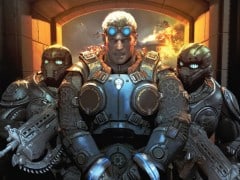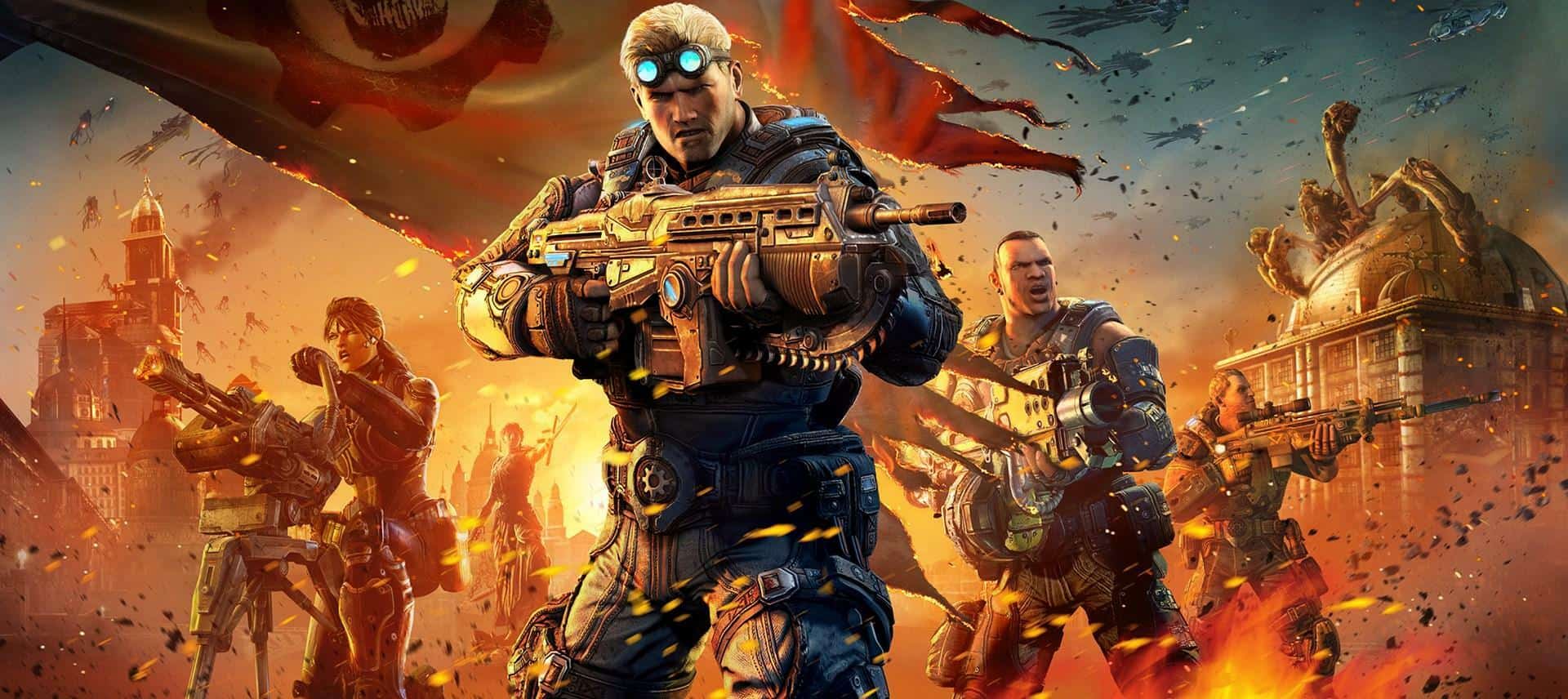You can trust VideoGamer. Our team of gaming experts spend hours testing and reviewing the latest games, to ensure you're reading the most comprehensive guide possible. Rest assured, all imagery and advice is unique and original. Check out how we test and review games here
Gears of War: Judgment is an odd one. On the one hand, anyone vaguely familiar with Epic’s schlocky, irony-deficient combat opera will feel completely at ease with it, sinking straight into its dramatic, ridiculous world, popping heads and chainsawing all and sundry. On the other though, it’s only been a year and a half since Gears of War 3 came out, and it’s hard not to think of Judgment as a quick moneymaker before everyone piddles away their hard earned cash on consoles that render Marcus Fenix’s massive neck at two billion polygons. Having said that there’s still a lot of good here. It’s by People Can Fly after all, the chaps behind cult favourites Painkiller and Bulletstorm.
Gears games always look good, but even by the series’ own standards Judgment is an especially good-looking bit of work, although the ‘destroyed beauty’ aesthetic feels somewhat overdone now. The characters look more human too. They’re still hulking colossi (it wouldn’t be Gears if the characters weren’t on the juice), but they don’t look quite so much like they were fashioned in clay by a drunk that’s watched too much WWE this time around.
Judgment is a much more low-key affair than its predecessors. It’s a prequel focusing on the exploits of Augustus Cole and Damon Baird, before they became the comedy sidekicks bolstering the bromance between Marcus and Dom. Because Baird was the nerdy one that made more quips than a hastily hashed out Joss Whedon character he naturally became a fan favourite, although he isn’t as over the top or whiney in Judgment. Cole Train’s a lot quieter too actually. They’re joined in their unit (Kilo Squad) by two largely forgettable new squadmates, Sofia Hendrik and Garron Paduk, who bring their own frowning dynamics, making up a predictably mismatched quartet.
Without giving too much away, the plot involves a tribunal presided over by a sour-faced frump by the name of Colonel Loomis, who’s accusing the squad of being a bit naughty. Each member of the squad gives their own testimony, each testimony in turn becoming part of the campaign.
The campaign structure itself also feels different than in Gears 2 and 3, which although engaging, were ultimately bloated, occasionally tedious affairs. Judgment mercifully avoids that, thanks no doubt to People Can Fly’s arcade-style, trigger happy influence. There are no ‘slowly walking with finger in ear bits’ (thank Christ) and there’s far less emphasis on blustering, melodramatic cut scenes. There’s also an added incentive to play skilfully, with stars to earn during segments of each level, which go towards unlocks (like the Aftermath campaign; more on that later).
Adding a rudimentary points system is a simple but pretty nifty way of making Gears feel a bit fresher again, encouraging you not to play like a feeble wimp, urging you instead to dive around and roadie run like a hulk possessed, going for that elusive headshot or gib. We’re not talking a Vanquish-style metamorphosis here, but a little incentive to be a bit more daring adds a lot to the game.
The mission declassification system – triggered by Crimson Omen symbols dotted around the stages – is pretty nifty too. These add little stipulations to certain segments, such as reduced visibility, time limits, reduced ammo and harder enemies. Your star rank gains quicker if you opt to turn it on, so it’s often worth giving each one a pop.
It’s at this point that Aftermath needs a mention. Set during Gears of War 3, it’s fine in itself, but it doesn’t have the star ranking or Declassified missions, playing much more like one of the earlier iterations. As such it feels somewhat lacking and even maybe (whisper it) a bit dull. Still it’s a nice little incentive to not play like a fingerless klutz in the main game.
Judgment has, of course, been designed with multiplayer in mind. Playing on your lonesome is good enough, but it’s much better with three other idiots joining you on your bloody soiree. The bigger emphasis on points scoring means there’s an increased focus on working well as a team, so playing with friends rather than foul-mouthed eight-year-old American children is probably for the best. If you do feel the need to teach the rest of Xbox LIVE a lesson in respect, there’s (finally) a Free For All mode, that lets you loose on everyone else.
It’s probably the most enjoyable new multiplayer gametype, especially if you’re vaguely competent at it, as making mincemeat out of lower level imbeciles is always satisfying. Elsewhere, it’s business as usual. Survival is basically Judgment’s Horde mode, but with a class-based system implemented, so there’s a greater emphasis on tactical play. It’s a lot more intense than Horde mode too. OverRun is similar, but sees you alternating between Locusts and Humans, so it adds in elements of Gears 3’s Beast mode. Which is good; scuttling about as a critter and causing all sorts of grief to fatnecked cogs is a lot of fun.
The standard Team Deathmatch returns too, which seems fine, although it’ll doubtless turn into the rolling shotgun orgy of the other games once everyone else gets their hands on it. Though let’s hope not. Multiplayer maps look aesthetically similar though, leading to the experience feeling a touch one-note, and as things stand at the minute, there aren’t enough of them.
On the whole however Judgment is a solid effort that, in some ways, changes the Gears formula for the better. Whether it will be remembered as anything other than a stopgap is questionable, but small qualms aside, it’s a good one.
Played through Main Campaign and Aftermath on Normal Mode in eight hours, doing at least half the Declassified missions. Played each mode of Multiplayer multiple times over. Even came first in a couple of free for alls.







